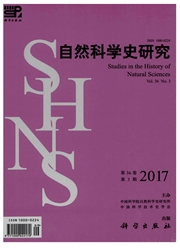

 中文摘要:
中文摘要:
20世纪50年代末、60年代初,中关关系仍然处于断绝状态而中苏关系恶化,中国在国际学术交流上处于被动。1962年丹麦物理学家奥格·玻尔访华,达成了中国和丹麦进行长期学术交流和合作的协议。1963年中国派物理学家杨福家、张礼赴丹麦哥本哈根理论物理研究所进行学术交流,打破了中国在国际学术交流上的孤立状态,促进了中国物理学界与国际物理学界的交往。但事实上两人赴丹麦的过程颇多周折,最后是由聂荣臻副总理亲自批准,而且二人在玻尔研究所的国际科学交往也受到了国际和国内政治的限制。本文挖掘并梳理了张、杨二人在历经各种波折后终于赴丹麦哥本哈根理论物理研究所进行访问研究的历史,分析了其背景、影响和意义,表明丹麦是20世纪60年代初中国与西方进行学术交流的一个重要通道与窗口。这段历史也反映出冷战中中国与西方学术交流的状态和限制。
 英文摘要:
英文摘要:
Abstract In 1962, the Danish physicist Aage Bohr visited China and reached an agreement with the Chinese Academy of Sciences, in which the latter would send two young physicists to his In- stitute for Theoretical Physics ( later named after his father Niels) at the University of Copenhagen for collaborative research. Following a national competition in 1963, Zhang Li of Tsinghua University and Yang Fujia of Fudan University were selected for the purpose, but their journey to Copenhagen was delayed due to a controversy over the source of Danish funding and their productive visits were marred by restrictions due to international politics of the Cold War. This paper examines the above episode as a case of China seeking to broaden its international scientific contacts with Europe at a time when such connections were cut off from both the US and the Soviet Union and the impact of the Cold War on transnational scientific interactions.
 同期刊论文项目
同期刊论文项目
 同项目期刊论文
同项目期刊论文
 期刊信息
期刊信息
